Why Ireland makes the perfect outdoors getaway
From the calm tidal waters of Dublin’s River Liffey to the crashing seas and rugged hills of the Donegal coast, a trip to Ireland is guaranteed to feed your inner waterborne adventurer
How often do we overlook our Ireland for ventures further afield? Silly of us, really, when there’s a perfectly good playground just an hour’s flight away. A playground with scenery so stunning that film makers and TV production companies flock there to take advantage its oft untouched, raw countryside. One that’s riddled with loughs and mountains, golden beaches and savage cliff lines, quiet country lanes and deep glens.
Even Dublin – steeped in history, architecture and literary connections (think Heaney, Beckett and Wilde) – has more to offer than your standard city break. Couple it with a visit to County Donegal, on the Atlantic coast, and you’ll be rewarded with a wet and wild weekend away. Guinness strictly optional.
Sea stack climbing on the Atlantic coast
City kayaking
As Ireland’s capital, Dublin is top of many a sightseer’s bucket list, and there are a few standard ways to explore it. On foot you can walk for miles, Dublin bikes can be picked up from street corners around the city or you can jump on a tour bus. But a different – and more exciting – way to explore it is by kayaking the River Liffey.
Pick up your sit-on-top kayak at Dublin City Mooring, just along from the Jeanie Johnston replica tall ship, similar to the ones that took migrants to the Americas during the Great Famine, a reminder of the importance of the river and its link to the sea.
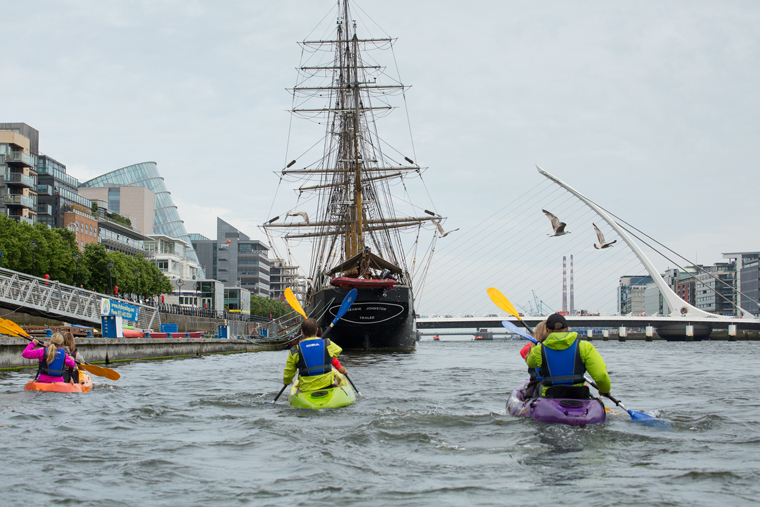
Exploring Dublin by kayak offers a unique perspective
Paddling down the river gives you a chance to observe the buildings, watch passers-by and kayak under the 20-plus bridges, each one steeped with intrigue. Take the Liffey Bridge, more commonly known as the Ha’penny Bridge due to the toll pedestrians were once charged, or the Simon Beckett Bridge, designed to look like an Irish harp.
City kayaking is accessible to all levels of paddler; all you need is footwear and clothing that you don’t mind getting wet. You’ll be provided with the necessary safety kit and the guides are great not only at instructing you, but sharing stories of Dublin, too. Beats a tour bus any day of the week.
Coasteering
Don’t forget to glance up and look around!
Jumping into a 3000 mile-wide ocean isn’t the obvious way to discover a country, but making Ireland’s extraordinarily rugged coast both the feature and the experience is one of the quirkiest and most exciting ways to see something new, especially if you mix it up with swimming, climbing and rock scrambling in the form of coasteering.
Whatever they say about the Gulf Stream keeping temperatures up, that first jump is always going to be breathtaking for every reason. And then you’re popped out of the water like a cork thanks to the suit and float vest, and scrambling slightly higher for the next hit. It’s addictive!
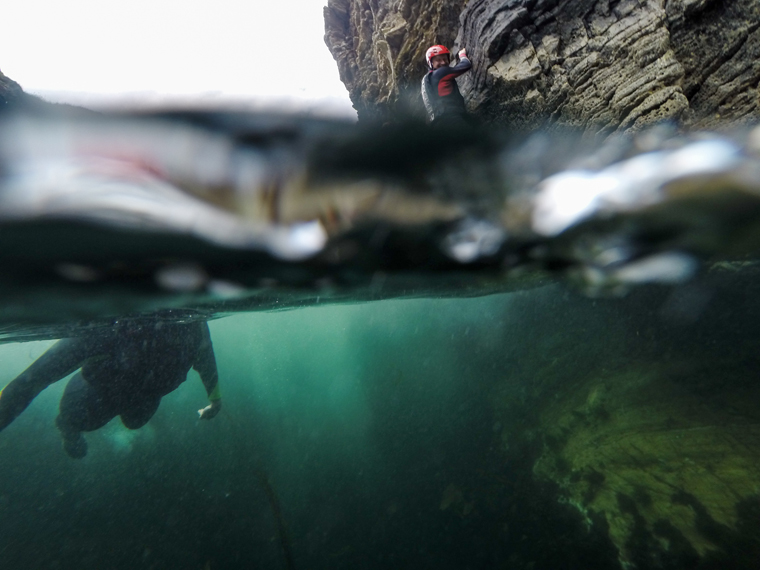
Srcambling, climbing and swimming combine
As you move along the coast, washed effortlessly around by the swell, don’t forget to glance up and take time to look around; there’s something very unique about seeing the coastline right from its edge.
Sea stack climbing
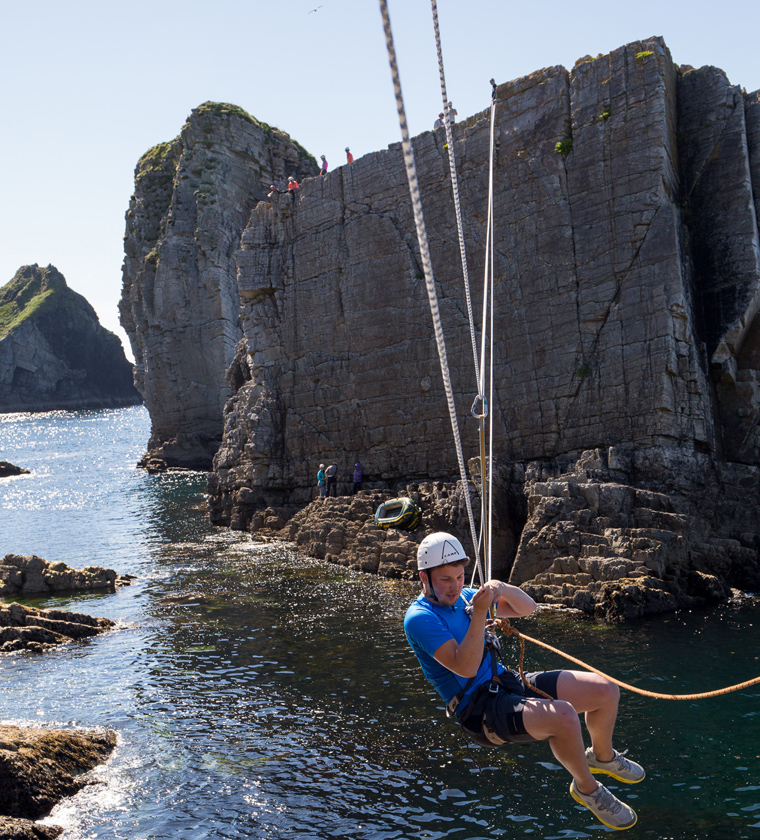
Getting to grips with Lurking Fear…
Adrenaline flowing from all that coasteering action? Time to up the ante with a bit of Lurking Fear… Not the name of a blockbuster horror movie, but of a sea stack off Tormore Island (Ireland’s highest sea stack).
It’s 25 metres in height, making it a daunting but doable climb for newbies, with routes to the summit from the north or south side. If you’re not an experienced sea stack climber, a guide is 100% necessary.
Hiking
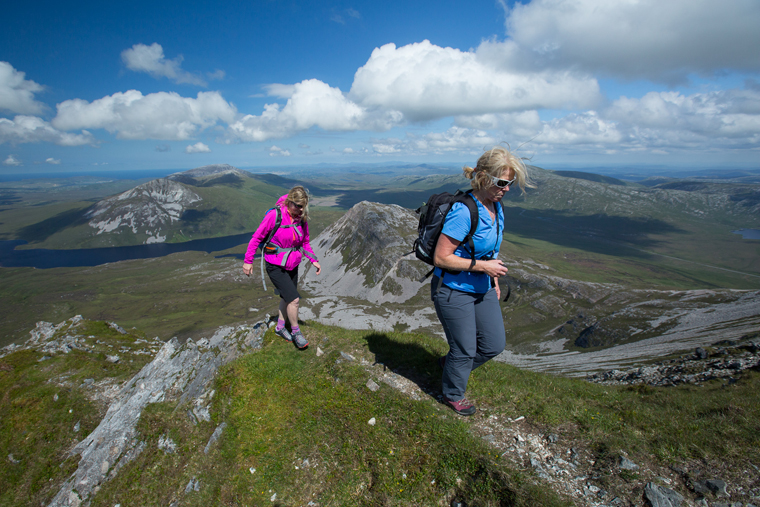
Even away from the coast Ireland is filled with drama and intrigue
If you can tear yourself away from the drama of the Donegal coastline, then head to Glenveagh National Park for a taste of Ireland’s finest inland scenery. Spread over 16,000 hectares, the park takes in wild mountain scenery and sprawling glens, as well as Lough Veagh and Glenveagh Castle.
The best way to enjoy it? Hiking, of course! There’s a good network of routes, varying from gentle strolls around the lake to nature trails – try the 8km-long Glen Walk, which passes through old settlements and oak woodland.
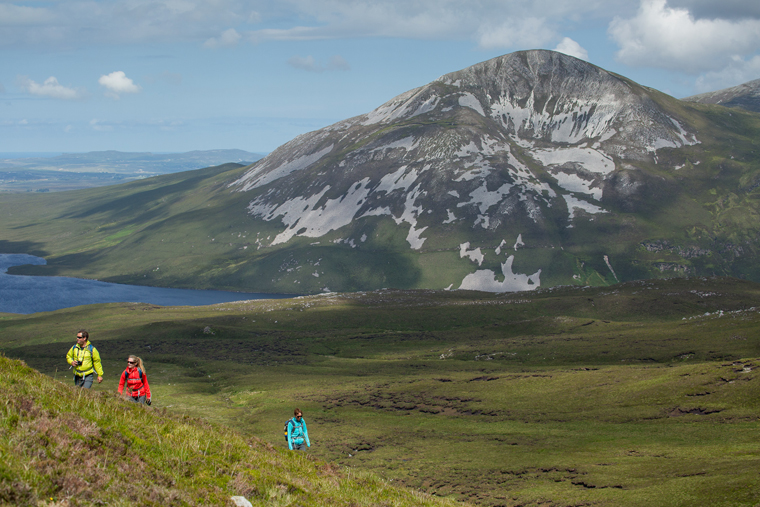
Steep, but the views are worth it!
Hill-walking in Glenveagh National Park can be challenging for the novice, but there are also relatively easy paths for all levels within the park. Beyond the trails are endless options through the Derryveagh Mountains, only suitable for experienced, well-equipped hikers with strong navigation skills.
Getting to Ireland
Fly to Dublin from most major UK airports with Ryanair, British Airways or Aer Lingus. The drive to County Donegal takes three hours, or you can take a bus. Alternatively, there’s a regular ferry service from Holyhead to Dublin or Dún Laoghaire.
Staying in Ireland
- Happy Glamping is an eco homestead close to Killybegs, Donegal, where you can choose from a series of cabins and lodges. From €140 for two nights, including access to the herb garden and fruit trees, plus free-range eggs.
- Wild Atlantic Camp is a grassy one-acre campsite situated on Donegal’s Wild Atlantic Way. Pitches cost €10 per night, based on a two person occupancy. The views over Sheephaven Bay are complimentary, of course.

